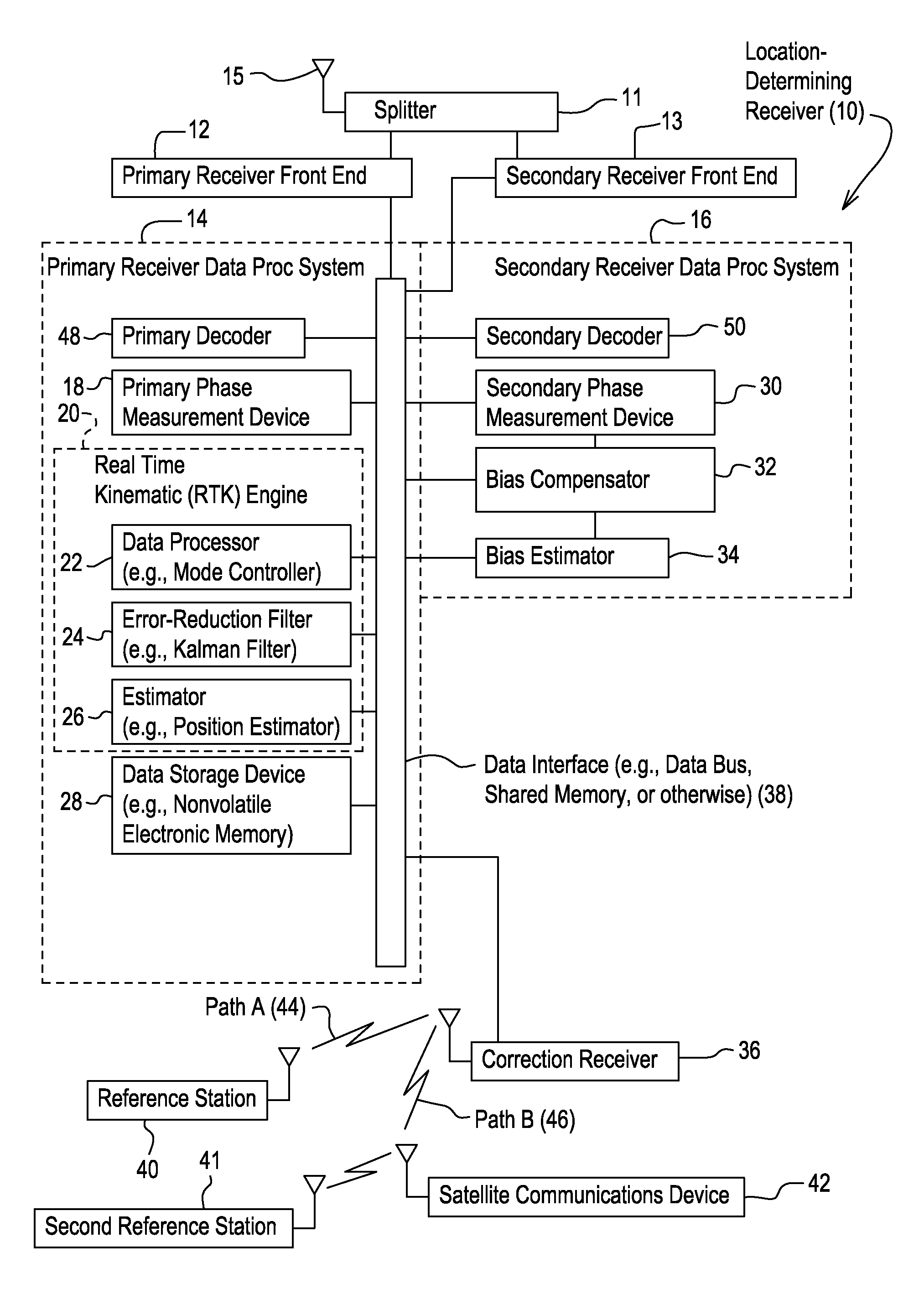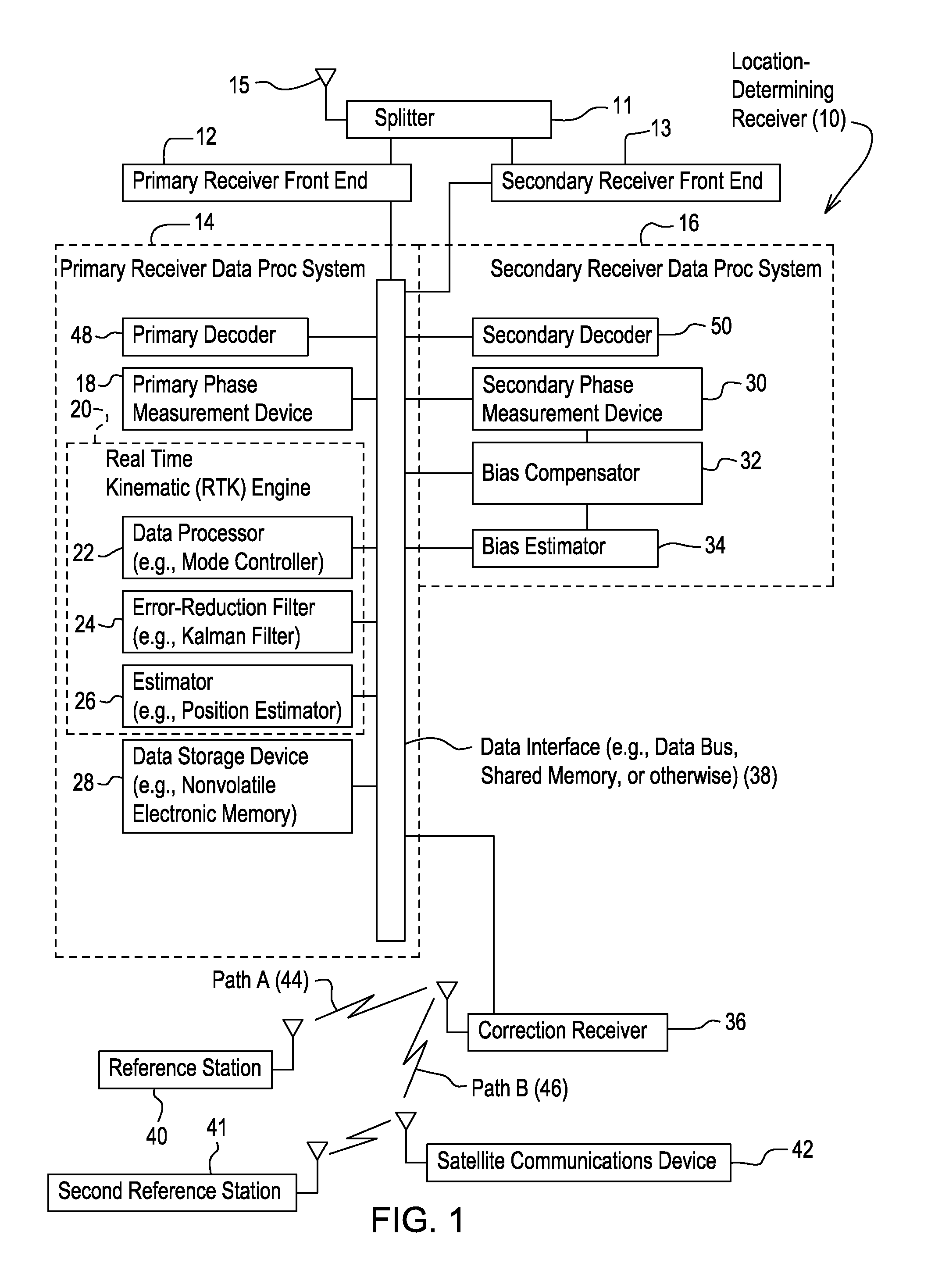Method and system for estimating position with bias compensation
a position estimation and bias compensation technology, applied in the field of method and system for estimating position with bias compensation, can solve the problems of glonass location-determining receivers susceptible to position errors, neither the error-reduction filter approach, nor the raim technique fully address
- Summary
- Abstract
- Description
- Claims
- Application Information
AI Technical Summary
Benefits of technology
Problems solved by technology
Method used
Image
Examples
Embodiment Construction
[0023]FIG. 1 illustrates a location-determining receiver 10 that comprises a primary receiver front end 12 coupled to a primary receiver data processing system 14 and a secondary receiver front end 13 associated with a secondary receiver data processing system 16. In one embodiment, the primary receiver front end 12 and the secondary receiver front end 13 may be coupled to an antenna 15 by a splitter 11 (e.g., hybrid or filter) or another device. The location-determining receiver 10 is associated with a correction receiver 36. The correction receiver 36 may be integrated into the location-determining receiver 10 or may communicate with the location-determining receiver 10 via a data port. The correction receiver 36 receives correction data (e.g., reference carrier phase correction data) from at least one of a reference station 40 and a second reference station 41.
[0024]The reference station 40 communicates via a wireless or electromagnetic signal to the correction receiver 36 via co...
PUM
 Login to View More
Login to View More Abstract
Description
Claims
Application Information
 Login to View More
Login to View More - R&D
- Intellectual Property
- Life Sciences
- Materials
- Tech Scout
- Unparalleled Data Quality
- Higher Quality Content
- 60% Fewer Hallucinations
Browse by: Latest US Patents, China's latest patents, Technical Efficacy Thesaurus, Application Domain, Technology Topic, Popular Technical Reports.
© 2025 PatSnap. All rights reserved.Legal|Privacy policy|Modern Slavery Act Transparency Statement|Sitemap|About US| Contact US: help@patsnap.com



